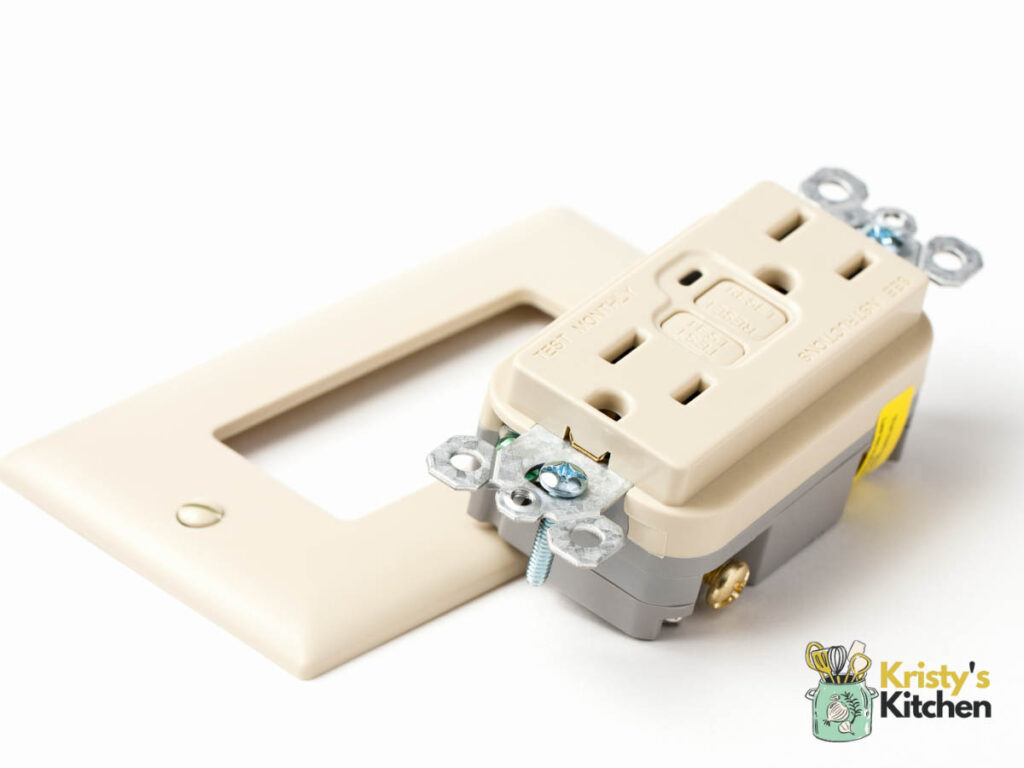Do You Need A GFCI For A Dishwasher? Yes!
Okay, so picture this – you’re in your kitchen and you’re thinking about getting a new dishwasher.
But hold up, safety is important, right?
So, I’m here to chat about whether you need a GFCI for that shiny new addition.
Let’s get started.
Do You Need a GFCI For a Dishwasher?

Yes, you need a GFCI for a dishwasher.
Let’s break it down. A GFCI – that’s Ground Fault Circuit Interrupter – is like your appliance’s safety net.
Why? Well, think about your dishwasher – water and electricity work pretty closely in there.
A GFCI monitors the flow of electricity, and if it senses any imbalance, it acts quickly by shutting off power.
This helps prevent shocks and potential fires, keeping you and your kitchen safe.
How GFCI Works?
Electricity flows in a circuit, moving from the “hot” wire to the device and then back through the “neutral” wire.
The GFCI constantly compares the current going out with the current coming back.
If they don’t match, even by a tiny fraction, it means electricity is escaping the intended path, possibly through you or some unintended conductive material.
This situation is called a ground fault, and it’s dangerous.
A ground fault can happen when water comes into contact with electricity, creating an alternate path for the electrical current.
This is where the GFCI steps in.
In the blink of an eye, it detects this slight imbalance and instantly cuts off power to the circuit, preventing the potential for electric shock or fire.
To put it simply, the GFCI’s rapid response helps maintain the balance in the electrical circuit and prevents unwanted electrical paths.
How To Install GFCI Outlet For Dishwasher

Installing a GFCI outlet is a very thorough process. You’re dealing with direct electricity here, so you need to be careful.
New Installation:
- Turn off the circuit power at the breaker box to stay safe.
- Choose an appropriate location for the GFCI outlet near the dishwasher.
- Run the necessary electrical wiring from the breaker box to the chosen location, following local electrical codes.
- Mount the GFCI outlet box onto the wall.
- Feed the wires through the knockout holes on the GFCI outlet box.
- Strip the wires’ insulation, leaving enough exposed wire to connect to the outlet.
- Connect the wires to the GFCI outlet: Attach the hot wire (usually black) to the brass “line” terminal, connect the neutral wire (white) to the silver terminal, and attach the ground wire (bare copper or green) to the green screw.
- Gently push the wires and outlet into the box, then secure the outlet to the box using the provided screws.
- Install the GFCI outlet’s cover plate.
- Turn the breaker back on.
- Test the GFCI outlet using a tester to ensure it’s working correctly and providing proper GFCI protection.
- Make sure the area is out of reach for kids and pets.
Replacement of an Old GFCI Outlet:
Got a used one that you never took advantage of before? Well, you should replace it just in case it’s broken down before using it with your dishwasher. Here’s how to do so:
- Turn off the circuit power at the breaker box to stay safe.
- Use a non-contact voltage tester to confirm the power is off by checking the old GFCI outlet’s terminals.
- Once you’re sure the power is off, remove the faceplate of the old GFCI outlet.
- Disconnect the old GFCI outlet from the wires by loosening the terminal screws.
- Check for a bridge between outlets; if present, ensure there’s only one set of wires connected.
- Straighten or trim the exposed wires and protect the ends with wire nuts.
- Turn on the power, and use the tester to identify the hot and neutral wires.
- Attach the hot wire (usually black) to the brass “line” terminal on the new GFCI outlet; connect the neutral wire (white) to the silver terminal.
- If there’s tape on the “load” terminals of the new GFCI outlet, remove it.
- If applicable, connect the wires that go to other outlets to the “load” terminals on the new GFCI outlet.
- Attach the ground wire (bare copper or green) to the green screw on the new GFCI outlet.
- Gently push the wires and outlet into the box, then secure the outlet with screws.
- Install the GFCI outlet’s cover plate.
- Turn on the power.
- Test the GFCI outlet using a tester to confirm everything works and GFCI protection is active.
- Make sure the area is out of reach for kids and pets.
After all that, you should be all set with a lot more protection than you used to have before for your dishwasher.
Benefits of GFCI Protection on a Dishwasher

GFCI Protection can provide plenty of broad benefits. Let’s go over them real quick, shall we?
- Electrical Circuit Safety: The GFCI acts as an additional safety layer, reducing the risk of electrical hazards in your home.
- Safeguarding Your Appliances: Not just your dishwasher, but all connected appliances benefit from the protection offered by a GFCI.
- Peace Of Mind: With a GFCI, you can confidently run your dishwasher without worrying about electrical mishaps.
- Conforming to Codes: Adhering to electrical codes like the NEC (National Electrical Code) ensures you’re meeting safety standards.
- Minimized Downtime: In case of a tripped GFCI, resetting it is simple and ensures minimal disruption to your daily routine.
FAQs
Does dishwasher need GFCI and AFCI?
Generally, a GFCI is necessary for a dishwasher due to water exposure. As for AFCI (Arc Fault Circuit Interrupter), it depends on local codes.
What appliances need to be GFCI protected?
Appliances in areas prone to moisture, like bathrooms, kitchens, and outdoor spaces, typically require GFCI protection.
What is code for wiring a dishwasher?
Wiring codes can vary, but most regions mandate GFCI protection and adherence to the NEC. Consult local experts for specifics.
Why would a dishwasher trip a breaker?
A tripped breaker might indicate a short circuit, an overload, or a component issue within the dishwasher. It’s a safety mechanism.
Final Thoughts
When it comes to safety in your kitchen, especially around water-prone areas like a kitchen island, the importance of a GFCI can’t be overstated.
It’s a smart move that helps prevent accidents and hazards.
Doing proper installation and making sure you stick to codes will let you have a secure home environment.
When in doubt, you can refer to this article, or seeking guidance from a certified electrician is always a wise decision.
